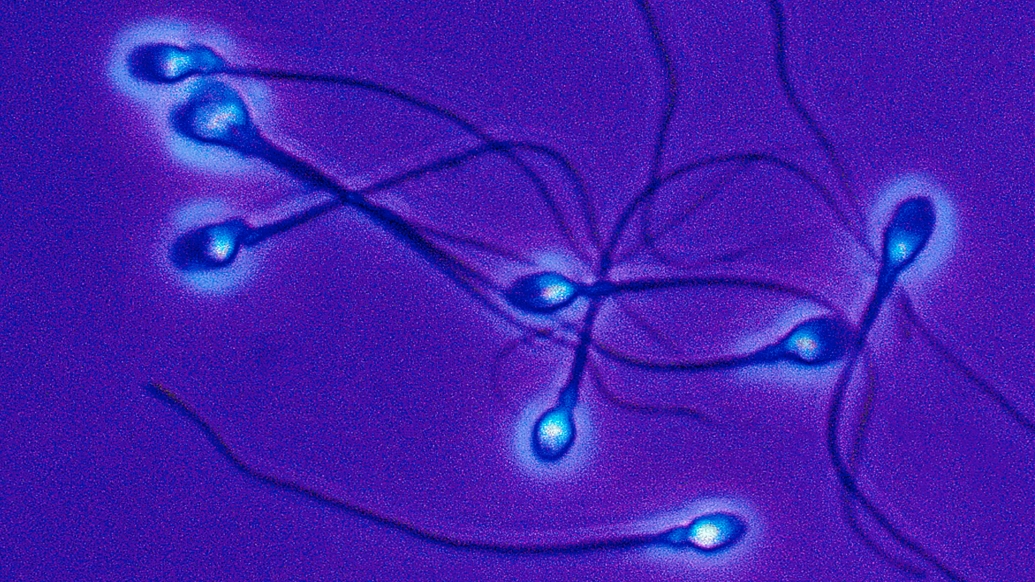Researchers dive into the molecular-level details of sperm formation
5:00 AM
Author |

Sperm play a critical role in the creation of new life, delivering essentially half of the genetic material required.
The success of this process relies on the generation of a developmentally competent sperm cell, which is often determined by shape. Indeed, during in vitro fertilization, the “best-looking” sperm is selected to fertilize an egg.
However, how this optimal shape translates to proper sperm function is difficult to assess because of many confounding factors.
Researchers at the University of Michigan are now delving into the molecular-level details of sperm formation, with a particular focus on how abnormalities in this process might lead to male-factor infertility.
Unlike other cells in the body, sperm possess a unique characteristic—their genetic material is packed with proteins called protamines.
Protamines have been found in various living organisms such as plants, fish, and mammals, spanning hundreds of millions of years of evolution.
The significance of this protamine-based packaging system of sperm cells raises an intriguing question: why do sperm use protamines to package DNA instead of histones, which are employed by all other cell types?
To uncover the significance of protamines in reproduction, Saher Sue Hammoud, Ph.D., Sy Redding, Ph.D., Lindsay Moritz, Ph.D., Samantha Schon, M.D., and their team conducted an in-depth study of the molecular sequence composition of protamines to understand how variations in the protein effect function.
“We started looking at protamines because they are in many animal species and are also rapidly evolving, so there’s a lot of sequence variation,” said Hammoud, an associate professor of human genetics, obstetrics and gynecology and urology.
Most mammals have multiple types of protamines and these need to be maintained in well-defined ratio, and deviations in this ratio have been associated with infertility.
Conventional wisdom has it that protamines are particularly efficient at tightly packaging DNA into dense structures called chromatin because they are rich in arginine, a positively charged amino acid that strongly binds to the negatively charged DNA.
However, recent studies have shown that protamines also have non-arginine amino acids that are species specific and have unexpected post-translational modifications, that chemically change proteins after they are made.
This study, published in the journal Nature Structural & Molecular Biology, explores previously unrecognized features of protamines.
“The molecules that interact and package DNA are known to have positively charged features. What’s really beautiful about this work is it reveals other logic embedded in these proteins that we never really considered, other amino acids that are doing very important jobs as well,” said Redding, assistant professor of biochemistry and molecular biotechnology at the University of Massachusetts Chan Medical School.
Furthermore, what was intriguing was the presence of post-translational modifications on protamines, despite the fact that sperm are not transcriptionally active.
“The fact that protamines have all of these different modifications on them suggests that these modifications must have some function in chromatin packaging,” said Moritz, a postdoctoral fellow in the Hammoud Lab and co-first author on the paper.
Using mice, they analyzed a modified lysine residue specific to a mouse protamine and present in mature mouse sperm. Substituting lysine with an alanine amino acid (which cannot be modified) resulted in abnormally shaped sperm, impaired embryonic development, and reduced fertility.
What’s more surprising was replacing the lysine with a positively charged arginine did not correct the defective sperm packaging, meaning the interactions go beyond the charge of the molecule.
Male-factor infertility often lacks a clear cause, which highlights the importance of studying these modifications.
Noted Schon, assistant professor in the U-M Department of Obstetrics and Gynecology and co-first author on the paper, "I think these modifications are interesting as another avenue of research and identifying the cause of infertility, and the fact that it might play a role in the early embryo has huge significance as a potential diagnostic tool and post-fertilization for IVF."
The team hopes to next examine the mechanisms of sperm cell packaging in greater detail in the hopes of recreating the process completely in vitro.
Additional authors: Mashiat Rabbani, Yi Sheng, Ritvija Agrawal, Juniper Glass-Klaiber, Caleb Sultan, Jeannie M Camarillo, Jourdan Clements, Michael R Baldwin, Adam G Diehl, Alan P Boyle, Patrick J O'Brien, Kaushik Ragunathan, Yueh-Chiang Hu, Neil L Kelleher, Jayakrishnan Nandakumar, Jun Z Li, Kyle E Orwig
Paper cited: “Sperm chromatin structure and reproductive fitness are altered by substitution of a single amino acid in mouse protamine 1”, Nature Structural & Molecular Biology. DOI: 10.1038/s41594-023-01033-4

Explore a variety of health care news & stories by visiting the Health Lab home page for more articles.

Department of Communication at Michigan Medicine
Want top health & research news weekly? Sign up for Health Lab’s newsletters today!





